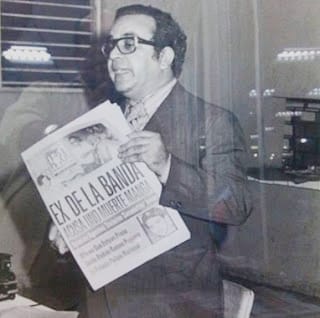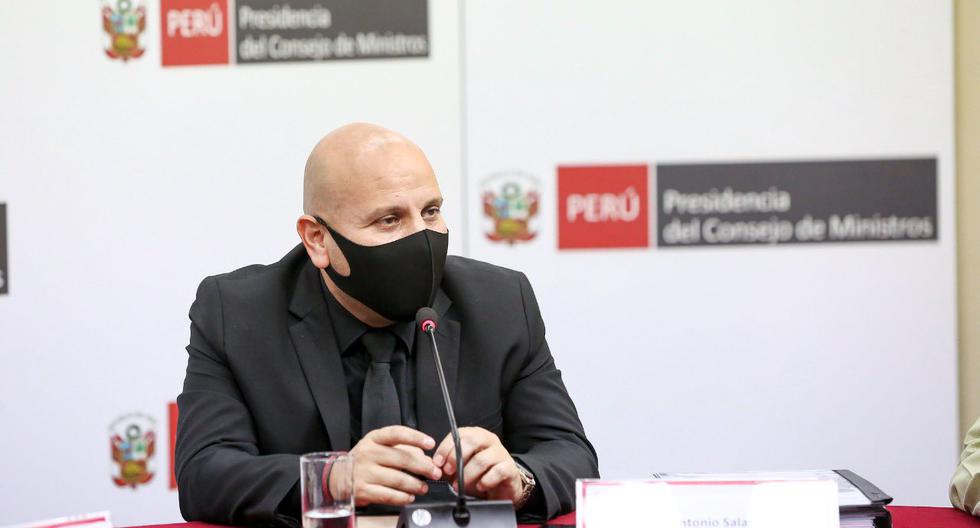That March 28, 1973, Gregory Garcia Castro (Goyito) was in the parking lot of the newspaper Ultima Hora, of which he was Editor-in-Chief, when suddenly several unknown individuals tried to take him by force from the place.
It was around 9:00 at night when the three shots were heard that blinded him to life due to his strong resistance to his kidnapping attempt. His body lay on the pavement and the blood covered the sidewalks and part of the curbs on Las Mercedes street, almost on the corner of José Reyes.
His death has not been fully resolved as there was never an official version of the possible motives for his murder. However, hypotheses and theories of the true reasons for that fateful event have gravitated.
Versions around the crime
In his book “Memorias de un Cortesano…”, the late president Joaquín Balaguer assures that his government never ordered the crime since Goyito had even been one of the founders of the Reformist Party, despite the fact that in his column “In a tris”, was a critic of his policies.
Balaguer, in his work, subtly attributes the assassination to the military struggle between the groups headed by Generals Neit Nivar Seijas and Enrique Pérez y Pérez.
This assertion is confirmed by the journalist Juan Bolívar Díaz, who has always affirmed that Goyito was murdered because “he had been denouncing the excesses and crimes of the terrorist group sponsored by the toughest sector of the police military Balaguerismo for more than three years and ended up being a victim. of the power struggle between the groups headed by Generals Enrique Pérez y Pérez and Neit Nivar Seijas”.
According to Bolívar Díaz, it has always been a mistake to link that vile crime with the publication of the interview he did with Toribio Peña Jáquez, a member of the guerrilla nucleus headed by the historical figure of Francisco Caamaño Deñó, who landed at Playa Caracoles, Ocoa, at the beginning of February of that year to combat the quasi-dictatorship of Joaquín Balaguer.
“In his last years, Goyito militated in defense of the rights of the murdered, persecuted, imprisoned or exiled. As he maintained his friendship with General Nivar Seijas, head of the other group that disputed the police-military hegemony of the regime, he could have been a victim of that power struggle”.

Other hypotheses
The late journalist César Medina, who was in the newspaper Ultima Hora that fateful night, described in one of his articles published in Listín Diario that in the last 40 years there has always been talk of a reformist political instance, parallel to Balaguerismo, which could have encouraged the murder, but no one ever presented credible evidence.
“There are even those who conjecture that Goyito’s murder could have originated in a television comment of his in relation to intimacies of a prominent military family,” he wrote.
According to Medina, Goyito knew that they were going to kill him because he had revealed it to his fellow editors.
“Goyito never ignored that crime would reach him… He was always aware of his hierarchy and social influence…”.
The investigation of a high-level commission appointed by Balaguer himself to investigate the crime concluded that the executors of Goyito’s murder were Lieutenant Juan María Arias Sánchez and Corporals Milton de la Cruz Lemus and José Rafael Pérez Pereyra. Arias Sánchez died a natural death in La Victoria prison, where he was for another crime.
Arias Sánchez was dressed as a civilian when he killed Goyito, but after the crime he put on his officer’s uniform and returned to the scene to “investigate” the incident. In some of the photos that were taken that night, Arias Sánchez appears in uniform observing the body among many of his companions.
Questions without answers
Who ordered Arias Sánchez to assassinate Goyito? What motivated Goyito’s delay at his work table that day beyond what was usual? Why did he leave the Newsroom as if he was in a hurry, leaving his desk keys, his house keys and other personal belongings that he usually always carried?

















